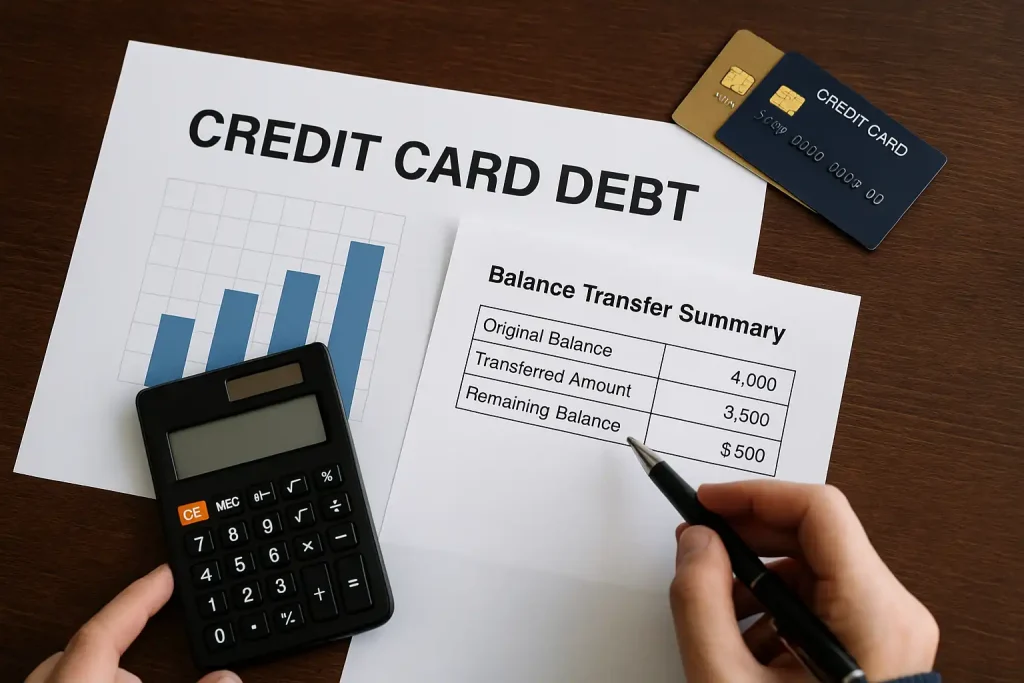Paying off credit card debt becomes especially challenging when interest rates absorb a large part of your monthly payments. In this context, balance transfer cards serve as a tool to reduce borrowing costs by shifting outstanding balances to an account with better conditions.
This type of card is designed to simplify debt management by combining different balances into a single one with low or zero interest for a limited period. When used with focus and planning, it can help regain control over personal finances and accelerate repayment.
How balance transfer cards work and why they matter

Balance transfer cards offer promotional interest-free periods—typically between six and 24 months—for transferring existing debt from other credit cards. During this time, payments are directed to reducing the actual debt, rather than being eroded by interest.
This temporary condition can be advantageous when paired with a realistic plan. The benefit lies not in the promotional period alone, but in the commitment to eliminate the debt before interest charges resume. Without discipline, the tool loses its effectiveness.
Key steps to use balance transfer cards efficiently
Before applying for balance transfer cards, it’s essential to calculate the amount to be transferred and check whether the new credit limit will be sufficient. Prioritize offers with adequate interest-free periods and low transfer fees. Once approved, initiate the transfer without delay and monitor its completion carefully. Some criteria to analyze include:
- Duration of the interest-free offer
- Cost of the transfer (if any)
- Payment penalties or loss of benefits
- Conditions for new purchases on the card
These variables affect the final cost. After the transfer is confirmed, the objective becomes one: repay the full amount within the promotional timeframe. Discipline is key. Automate payments when possible to avoid late fees, which can cancel the 0% interest offer. From that point on, the card should be used only to eliminate the transferred balance—not for additional expenses.
What to consider before applying for a balance transfer card
Before choosing a card, it’s essential to evaluate whether this strategy aligns with your financial reality. Balance transfer cards work best when paired with a predictable income and a defined plan to clear the balance within the interest-free window. Without that, the risk of falling back into revolving debt increases significantly. It’s also worth checking your credit score beforehand, as approval and conditions may depend on it.
In addition to fees and deadlines, assess the bank’s policies for promotional cancellation. Some issuers revoke the 0% rate even after minor delays. Carefully reading the contract avoids surprises. Also, ensure that the card doesn’t apply retroactive interest at the end of the period. Taking the time to understand each clause reduces exposure to hidden costs and reinforces your control over the process.
Common mistakes to avoid when using these cards
Some users treat balance transfer cards as a new source of credit, rather than a mechanism for restructuring debt. This approach cancels the intended benefit. Making new purchases or missing payments interrupts the process and can lead to even higher costs.
One-time opportunity, not a long-term solution
The role of balance transfer cards is transitional. They provide short-term leverage to pay off debt under better conditions, not a permanent way to manage finances. Treating them as a revolving solution increases dependence on credit and delays resolution.
Their value lies in the margin they offer to eliminate balances without interest. But that margin must be matched by consistency. When used with purpose, they create space to rebalance—not postpone—financial decisions.



